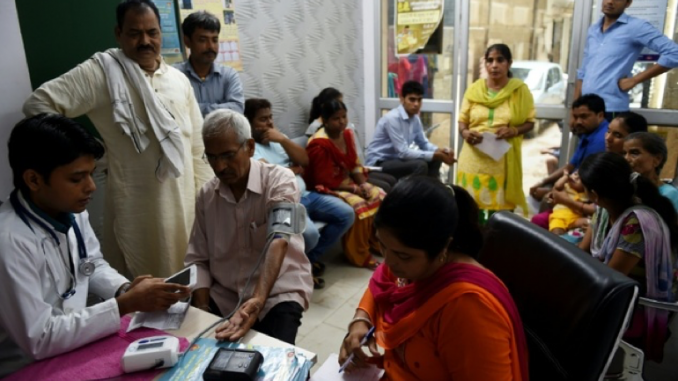
By N.S. Dharmshaktu
Universal health coverage that is designed on a revised definition of health will lead to a better understanding, and attainment, of holistic well-being
The health goal under the United Nations Sustainable Development Goals is, arguably, the most important target on the agenda of India and other member countries because of its inextricable connection with other indicators of socio-economic development like poverty, zero hunger (nutrition), quality education, gender equality, clean water and sanitation. The essence of this goal is to “ensure healthy lives and promote well-being for all in all ages”, which implies universal health coverage.
The World Health Organization (WHO) Health Assembly set the target of “Health for All” in May 1977. These were to be achieved by the end of 2000. Subsequently, in 2000, the Millennium Development Goals were formulated by the UN with the target for achievement set for 2015. This was followed by the Sustainable Development Goals (SDG), set by the UN in 2016, to be achieved by 2030 by all member countries.
Throughout this trajectory, the essence of “health for all” has been preserved. The SDGs advocate universal health coverage for which the definition of health needs to be understood from a holistic perspective. This would entail revisiting the 70-year-old definition of health as described by the World Health Organization—“a state of complete physical, mental, social well-being and not merely absence of disease or infirmity”—and considering other determinants as well. A determinant-based definition of health and well-being will not only help in better perception of disease, but also provide a better tool in deciding the right priority for public health interventions. In fact, the ongoing 71st World Health Assembly in Geneva deliberated on the importance of environmental, climate and other determinants of health. Known avoidable environmental risk factors cause at least 13 million deaths every year and about one quarter of the global burden of disease.
Besides many others, one important factor that needs to be considered while comparing the magnitude of different diseases is the level of parasitemia or viremia in the general population, incubation period and presence of pathogens in the non-human host in close environment, etc. Diseases of public health importance, such as kala azar, lymphatic filariasis, leprosy, etc., can manifest in an apparently healthy population in tropical and sub-tropical climatic regions and can re-emerge if not eliminated. While there has been tremendous progress in addressing neglected tropical diseases in many countries, including India, due to concerted efforts of the government, elimination efforts are still to be universalized across many districts. These diseases shouldn’t be neglected any more, even though the magnitude of reported cases has reduced over the years.
The countries affected by neglected tropical diseases must intensify efforts to achieve elimination that is validated and universal care for disabled persons.
Well-being, in general, is associated with self-preserved health, awareness and practice of good health behaviour, social connectedness and productivity. Viewed through this holistic lens, the revised definition of health should include all such determinants and be redefined as “a state of complete physical, mental, social and environmental well-being, including absence of determinants of disease in the body or in its proximity that can cause harm by use or by contact with the body”.
It is high time for UN bodies/World Health Assembly to acknowledge the need for redefining health in light of the SDGs. Universal health coverage should be designed based on the revised definition of health. That will lead to a better understanding, and attainment, of holistic health and well-being. This will help in directing focused priority and mobilization of resources in the right direction.
In addition, a national framework for universal health coverage needs to be developed by the member countries. This would involve inter-sectoral collaborations at the community level with local health teams, the private sector, non-government organizations and community-based organizations to strengthen primary health and support secondary and tertiary infrastructure. This would not only ensure proper and complete treatment but also empower people to protect themselves from illness and encourage treatment-seeking behaviour for which people’s awareness needs to be built up through simple community-level ideas for health promotion, prevention and self-protection as essential part of primary healthcare. Joint participation with health teams by trained volunteers in uniform, including those from National Cadet Corps (NCC), National Scout Services (NSS), nursing schools, etc., can provide a thrust for addressing social, and environmental determinants and can bring about positive change in personal hygiene, healthy behaviour and cleanliness.
History is full of examples of governments empowering their people to propagate a holistic approach to what we now term universal health coverage. In the third century BC, emperor Ashoka is believed to have said, “I am going to propagate medicinal herbs throughout my kingdom to ensure complete accessibility to all my subjects as it is my ethical responsibility to provide good health to all people.”
It is time, clearly then, to let history repeat itself.
N.S. Dharmshaktu is principal adviser, public health, ministry of health and family welfare, government of India. Views expressed are personal.
Source: Livemint

Leave a Reply